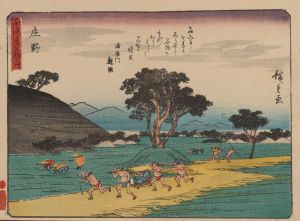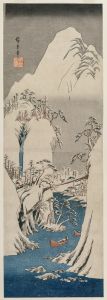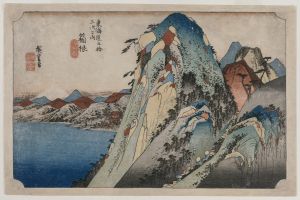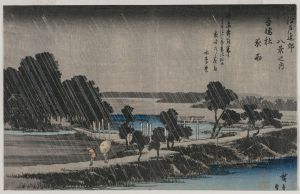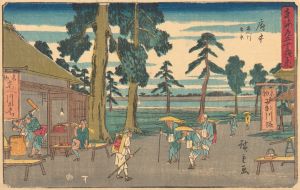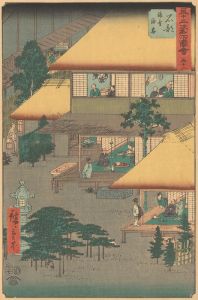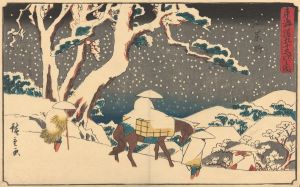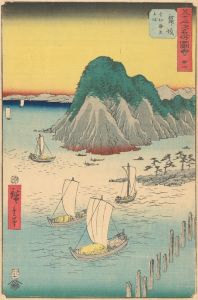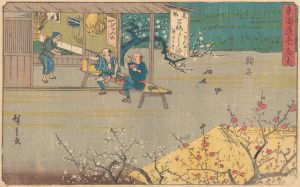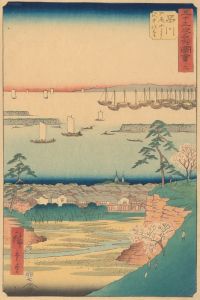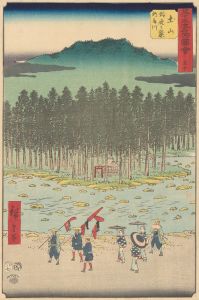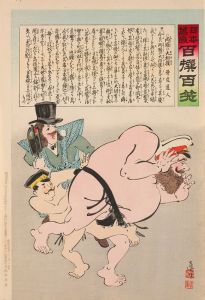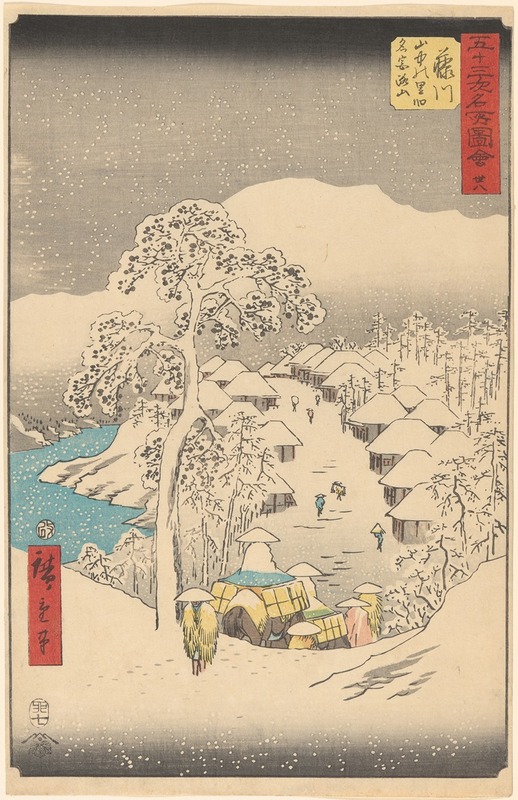
Fujikawa
A hand-painted replica of Andō Hiroshige’s masterpiece Fujikawa, meticulously crafted by professional artists to capture the true essence of the original. Each piece is created with museum-quality canvas and rare mineral pigments, carefully painted by experienced artists with delicate brushstrokes and rich, layered colors to perfectly recreate the texture of the original artwork. Unlike machine-printed reproductions, this hand-painted version brings the painting to life, infused with the artist’s emotions and skill in every stroke. Whether for personal collection or home decoration, it instantly elevates the artistic atmosphere of any space.
Andō Hiroshige, a renowned Japanese ukiyo-e artist of the Edo period, is celebrated for his landscape prints and his ability to capture the transient beauty of nature. One of his notable works is "Fujikawa," part of the series "The Fifty-three Stations of the Tōkaidō" (Tōkaidō Gojūsan-tsugi), which is among his most famous series. This series depicts the scenic views along the Tōkaidō road, the main route connecting Edo (modern-day Tokyo) to Kyoto.
"Fujikawa" is the 38th station in this series and is a testament to Hiroshige's skill in portraying the everyday life and landscapes of Japan during the Edo period. The Tōkaidō road was a vital artery for travel and commerce, and Hiroshige's series captures the essence of this journey, offering a glimpse into the cultural and social aspects of the time.
In the "Fujikawa" print, Hiroshige illustrates a scene that is both tranquil and bustling, reflecting the dual nature of the station as a place of rest and activity. The composition typically includes travelers and locals, showcasing the interactions and movements that were common at such stations. Hiroshige's use of color and perspective in this print is notable, as it brings depth and vibrancy to the scene, inviting viewers to explore the details of the landscape and the people within it.
Hiroshige's work is characterized by its attention to detail and the use of perspective to create a sense of depth. In "Fujikawa," he employs these techniques to draw the viewer's eye through the composition, from the foreground figures to the distant landscape. The use of color is subtle yet effective, with a palette that captures the natural beauty of the area and the mood of the scene.
The "Fifty-three Stations of the Tōkaidō" series was produced after Hiroshige's own journey along the Tōkaidō road in the early 1830s. This journey provided him with firsthand experience of the landscapes and scenes he would later depict in his prints. The series was published in various editions, with the Hoeido edition being the most famous and widely recognized.
Hiroshige's work, including "Fujikawa," had a significant influence on Western art, particularly on the Impressionists, who admired his use of color and composition. His ability to capture the fleeting moments of everyday life and the beauty of the natural world resonated with artists seeking to break away from traditional Western artistic conventions.
Today, Hiroshige's prints are celebrated for their artistic merit and historical significance, offering insight into the culture and society of Edo-period Japan. "Fujikawa" remains a cherished example of Hiroshige's mastery in ukiyo-e, reflecting both the artist's personal journey and the broader cultural journey of Japan during this period.






